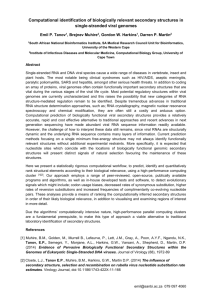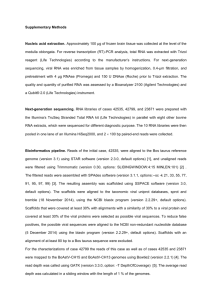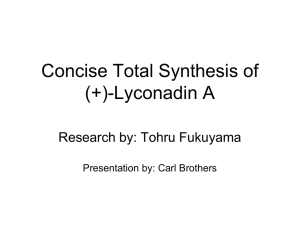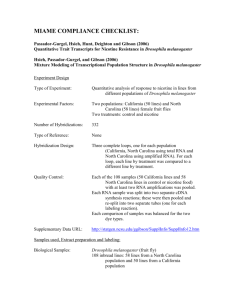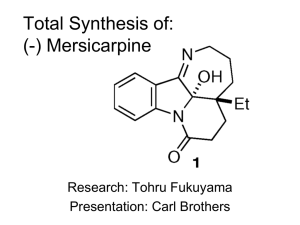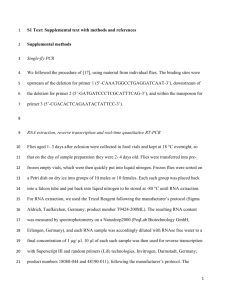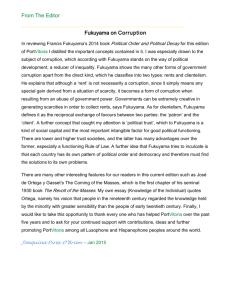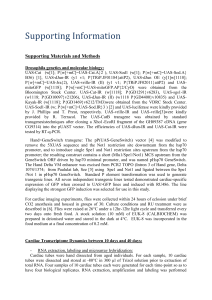References - Spectrométrie de Masse Biologique et Protéomique
advertisement
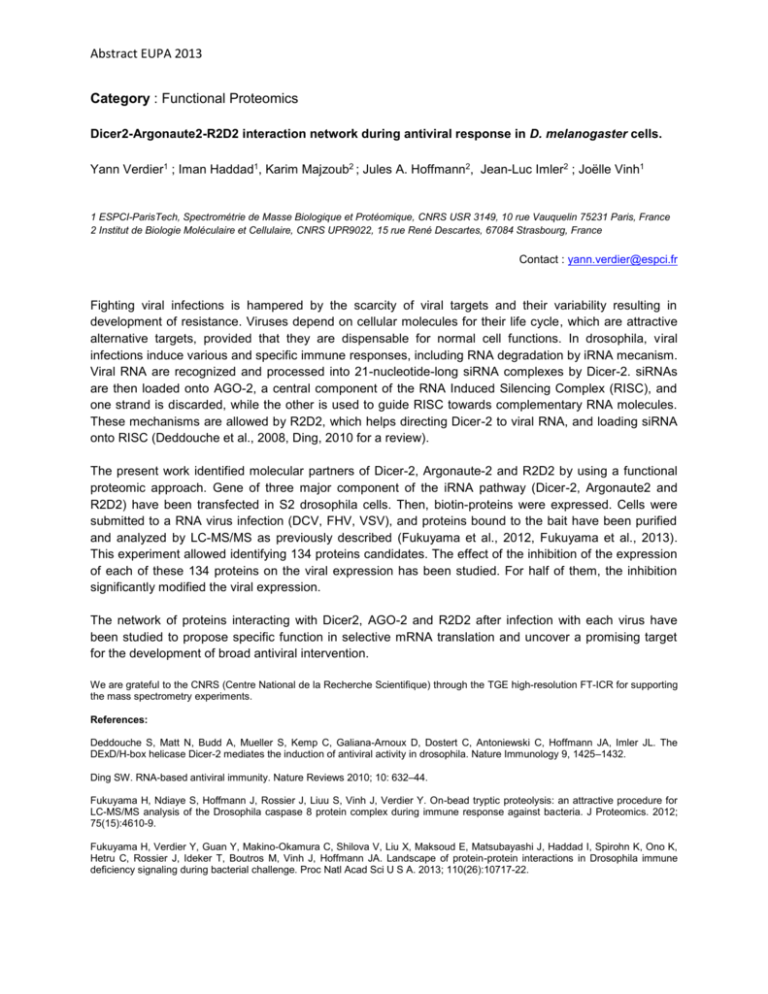
Abstract EUPA 2013 Category : Functional Proteomics Dicer2-Argonaute2-R2D2 interaction network during antiviral response in D. melanogaster cells. Yann Verdier1 ; Iman Haddad1, Karim Majzoub2 ; Jules A. Hoffmann2, Jean-Luc Imler2 ; Joëlle Vinh1 1 ESPCI-ParisTech, Spectrométrie de Masse Biologique et Protéomique, CNRS USR 3149, 10 rue Vauquelin 75231 Paris, France 2 Institut de Biologie Moléculaire et Cellulaire, CNRS UPR9022, 15 rue René Descartes, 67084 Strasbourg, France Contact : yann.verdier@espci.fr Fighting viral infections is hampered by the scarcity of viral targets and their variability resulting in development of resistance. Viruses depend on cellular molecules for their life cycle, which are attractive alternative targets, provided that they are dispensable for normal cell functions. In drosophila, viral infections induce various and specific immune responses, including RNA degradation by iRNA mecanism. Viral RNA are recognized and processed into 21-nucleotide-long siRNA complexes by Dicer-2. siRNAs are then loaded onto AGO-2, a central component of the RNA Induced Silencing Complex (RISC), and one strand is discarded, while the other is used to guide RISC towards complementary RNA molecules. These mechanisms are allowed by R2D2, which helps directing Dicer-2 to viral RNA, and loading siRNA onto RISC (Deddouche et al., 2008, Ding, 2010 for a review). The present work identified molecular partners of Dicer-2, Argonaute-2 and R2D2 by using a functional proteomic approach. Gene of three major component of the iRNA pathway (Dicer-2, Argonaute2 and R2D2) have been transfected in S2 drosophila cells. Then, biotin-proteins were expressed. Cells were submitted to a RNA virus infection (DCV, FHV, VSV), and proteins bound to the bait have been purified and analyzed by LC-MS/MS as previously described (Fukuyama et al., 2012, Fukuyama et al., 2013). This experiment allowed identifying 134 proteins candidates. The effect of the inhibition of the expression of each of these 134 proteins on the viral expression has been studied. For half of them, the inhibition significantly modified the viral expression. The network of proteins interacting with Dicer2, AGO-2 and R2D2 after infection with each virus have been studied to propose specific function in selective mRNA translation and uncover a promising target for the development of broad antiviral intervention. We are grateful to the CNRS (Centre National de la Recherche Scientifique) through the TGE high-resolution FT-ICR for supporting the mass spectrometry experiments. References: Deddouche S, Matt N, Budd A, Mueller S, Kemp C, Galiana-Arnoux D, Dostert C, Antoniewski C, Hoffmann JA, Imler JL. The DExD/H-box helicase Dicer-2 mediates the induction of antiviral activity in drosophila. Nature Immunology 9, 1425–1432. Ding SW. RNA-based antiviral immunity. Nature Reviews 2010; 10: 632–44. Fukuyama H, Ndiaye S, Hoffmann J, Rossier J, Liuu S, Vinh J, Verdier Y. On-bead tryptic proteolysis: an attractive procedure for LC-MS/MS analysis of the Drosophila caspase 8 protein complex during immune response against bacteria. J Proteomics. 2012; 75(15):4610-9. Fukuyama H, Verdier Y, Guan Y, Makino-Okamura C, Shilova V, Liu X, Maksoud E, Matsubayashi J, Haddad I, Spirohn K, Ono K, Hetru C, Rossier J, Ideker T, Boutros M, Vinh J, Hoffmann JA. Landscape of protein-protein interactions in Drosophila immune deficiency signaling during bacterial challenge. Proc Natl Acad Sci U S A. 2013; 110(26):10717-22.
